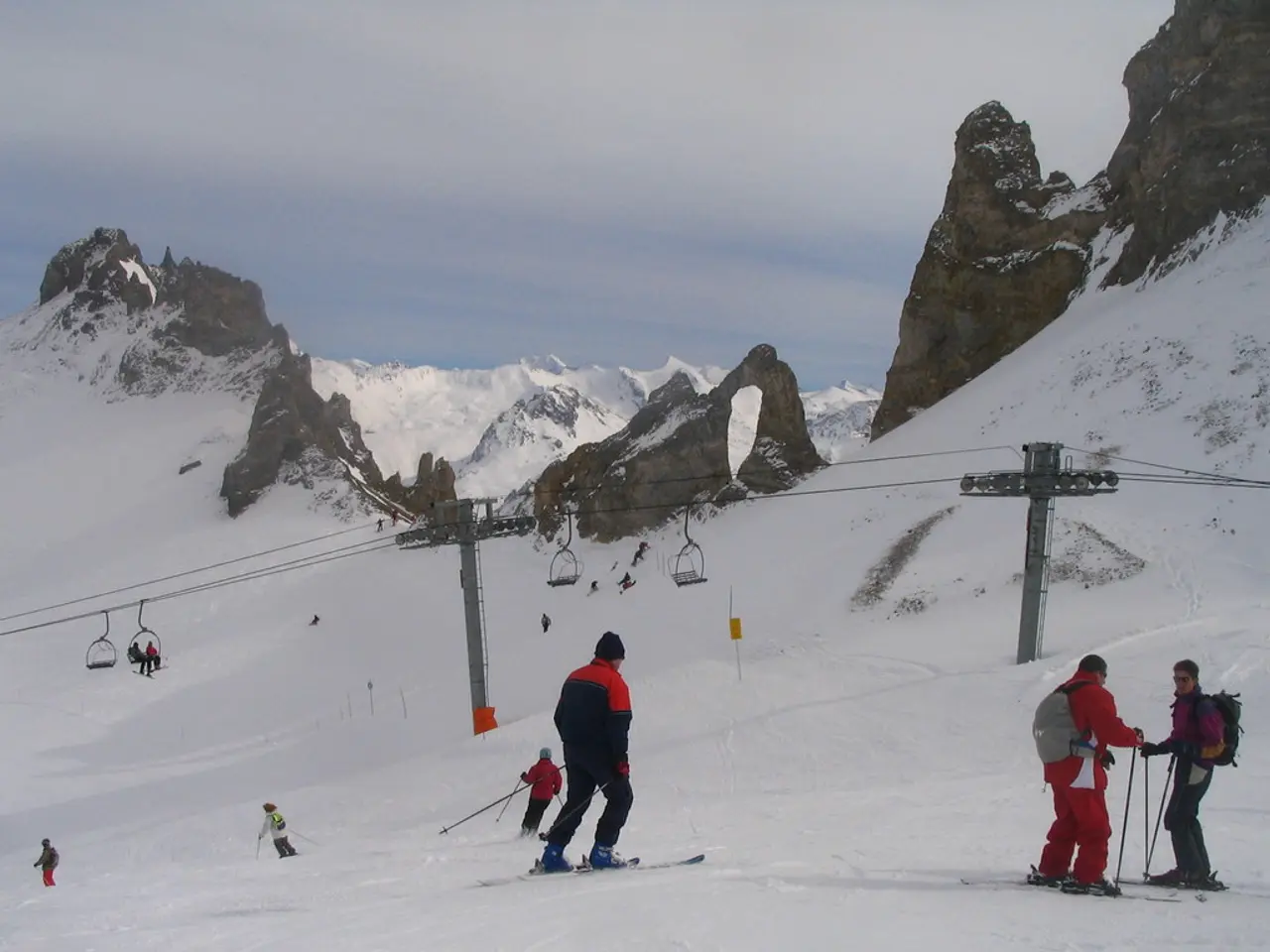On the 27th of May, 1945, Thrilling Ski Descent at Hafelekar
In the aftermath of World War II, the U.S. military made a concerted effort to boost the morale of returning enlisted personnel. One such initiative was the establishment of Enlisted Men's Clubs (EMCs), which provided recreational facilities and opportunities for soldiers to unwind and engage in leisure activities. Ski resorts, with their allure of physical activity and relaxation, became popular sites for these clubs, particularly for troops stationed in mountainous regions or on occupation duty in Europe.
These informal institutions, set up either on base or in nearby civilian recreational areas, offered enlisted men a place to gather, socialise, and sometimes participate in ski-related activities. The growing popularity of skiing among veterans, who had developed an interest in the sport during the war, contributed to the growth of ski resorts that catered to GIs.
The EMCs served a triple purpose: they boosted morale, alleviated stress from military duties, and rewarded soldiers with leisure opportunities. Ski resorts, with their picturesque landscapes, provided the perfect backdrop for these clubs. For instance, the Enlisted Men's Clubs were located at attractive vacation spots, such as high above the Inn Valley and near Lake Achensee.
Local ski instructors were often on hand to provide lessons for the GIs. At the Enlisted Men's Club at the Hotel Seegrube, GIs were given day passes and could borrow skis for their stay. The slope where they learned to ski was steep and exciting, with the summer snow providing some braking for the novice skiers.
One such GI, Arthur Flynn, returned to the slope years later in disbelief. Having no prior experience in skiing, he had learned the sport at the EMC near Lake Achensee. The activities offered at the EMCs were intended to provide a stark contrast to the horrifying experiences and deprivations of the frontline battles. Along with skiing, soldiers could enjoy leisure activities like drinking beer and dancing.
The gratitude of the homeland was not absent during the establishment of these EMCs, unlike after World War I. The clubs were part of efforts to show GIs and their families the economic benefits of the victory. For more detailed or location-specific histories, specialized military archives, veterans’ associations records, or histories of particular ski resorts known for their WWII veteran clientele would need to be consulted.
In summary, Enlisted Men’s Clubs for GIs at ski resorts emerged in the post-WWII era as morale-boosting recreational centers backed by military welfare programs. The clubs reflected the growing veteran interest in skiing and outdoor recreation, offering a taste of the good life after the hardships of the frontline battles. However, the precise historical development and organization of such clubs require more targeted historical sources beyond those currently available in the search results.
In the post-WWII era, these Enlisted Men's Clubs, located at attractive vacation spots like high above the Inn Valley and near Lake Achensee, fostered a growing interest in sports such as skiing among veterans, who had previously discovered the sport during the war. European-leagues like Laliga might have been less prominent during these clubs' existence, but the impact they had on promoting leisure activities and boosting veterans' morale cannot be underestimated.








